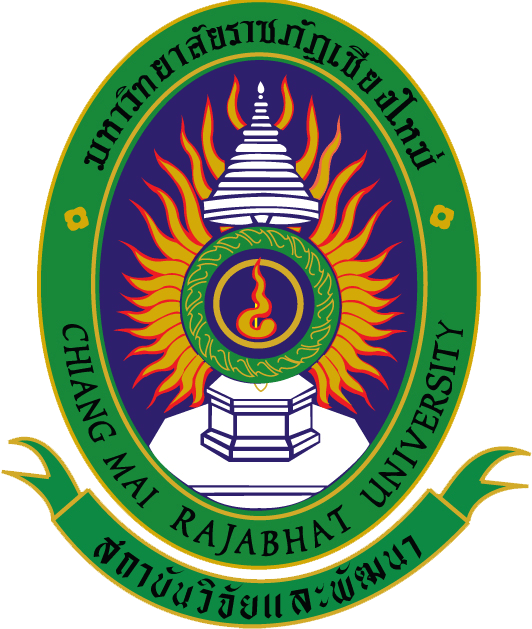
ระบบสารสนเทศงานวิจัย สถาบันวิจัยและพัฒนา มหาวิทยาลัยราชภัฏเชียงใหม่
Research Information System(RIS)
การพัฒนาแบบฝึกเพื่อแก้ปัญหาการอ่านออกเสียงภาษาไทยมาตรฐานสำหรับนักเรียนไทยเชื้อสายคะฉิ่น ในระดับชั้นมัธยมศึกษาตอนต้น โรงเรียนบ้านแม่นะ อำเภอเชียงดาว จังหวัดเชียงใหม่
อาจารย์ ดร.เฉลิมชัย ไชยชมภู
คณะมนุษยศาสตร์และสังคมศาสตร์
คำสำคัญ :
เลขทะเบียน :
489-58-HUSO-NRCT
บทคัดย่อ
งานวิจัยในครั้งนี้มีวัตถุประสงค์เพื่อ1) ศึกษาระบบเสียงของภาษาคะฉิ่นทั้งโครงสร้างพยางค์ (syllable structure), ระบบพยัญชนะ สระและวรรณยุกต์ โดยใช้ทฤษฎีภาษาศาสตร์พรรณนา (Descriptive linguistics) 2) เพื่อศึกษาความแตกต่างของระบบเสียงภาษาคะฉิ่นกับภาษาไทยมาตรฐาน 3) เพื่อสร้างแบบฝึกทักษะการอ่านออกเสียงภาษาไทยมาตรฐานในการสอนซ่อมเสริมสำหรับนักเรียนไทยเชื้อสายคะฉิ่นระดับมัธยมศึกษาตอนต้น โรงเรียนบ้านแม่นะ อำเภอเชียงดาว จังหวัดเชียงใหม่ และ 4) เพื่อเปรียบเทียบผลสัมฤทธิ์ทางการอ่านออกเสียง ก่อนและหลังการใช้ แบบฝึกแก้ปัญหาการอ่านออกเสียงภาษาไทยมาตรฐานในการสอนซ่อมเสริมสำหรับนักเรียนไทยเชื้อสายคะฉิ่นระดับมัธยมศึกษาตอนต้น ในการศึกษาระบบเสียงของภาษาคะฉิ่นผู้วิจัยใช้ผู้บอกภาษาจำนวน 30 คน เครื่องมือที่ใช้ในการรวบรวมข้อมูลประกอบไปด้วยรายการคำ จำนวน 766 คำ ผู้วิจัยเก็บข้อมูลโดยใช้วิธีอัดเสียงผู้บอกภาษา และนำข้อมูลที่ได้มาวิเคราะห์ตามระเบียบวิธีการทางภาษาศาสตร์ ผลการวิจัยพบว่า หน่วยเสียงพยัญชนะภาษาคะฉิ่น บ้านใหม่สามัคคี หมู่ที่ 14 ตำบลเมืองนะ อำเภอเชียงดาว จังหวัดเชียงใหม่ มีทั้งหมด 25 หน่วยเสียง ได้แก่ /p, t, k, , ph, th, ch, kh, b, d, g, m, n, n, , , s, z, , ts, , w, l, j, r/ หน่วยเสียงพยัญชนะประสม มีทั้งหมด 21 หน่วยเสียง ได้แก่ /pr, phr, br, gr, kr, khr, thw, dw, gw, tsw, w, pj, phj, bj, tj, kj, khj, gj, chj, mj, j/ ส่วนเสียงพยัญชนะท้ายมี 9 เสียง ได้แก่ /p, t, k, , m, n, , w, j/ หน่วยเสียงพยัญชนะทั้ง 25 หน่วยเสียง สามารถเกิดเป็นพยัญชนะต้นได้ทุกหน่วยเสียงและเกิดเป็นพยัญชนะท้ายได้เพียง 9 หน่วยเสียง นอกจากในภาษาคะฉิ่นยังพบหน่วยเสียงสระเดี่ยว จำนวนทั้งหมด 10 หน่วยเสียง ได้แก่ /i, i:, u, u:, e, a, a:, , :, :/ และหน่วยเสียงสระประสม ทั้งหมด 3 หน่วยเสียง ได้แก่ /ia, a, ua/ ในส่วนของหน่วยเสียงวรรณยุกต์ ภาษาคะฉิ่นมีวรรณยุกต์จำนวน 5 หน่วยเสียงได้แก่ เสียงกลางระดับ (mid level) เสียงสูงระดับ (high level) เสียงต่ำตก (low falling) เสียงสูงตก (high falling) และเสียงสูงขึ้น (high rising) เมื่อนำระบบเสียงคะฉิ่นดังกล่าวมาเปรียบเทียบกับระบบเสียงภาษาไทยมาตรฐานพบว่าในระบบเสียงดังต่อไปนี้ หน่วยเสียงพยัญชนะต้นที่ไม่พบในภาษาไทยมาตรฐานสามารถแบ่งออกเป็น 2 ชนิด ได้แก่หน่วยเสียงพยัญชนะต้นเดี่ยว จำนวน ๓ หน่วยเสียง ได้แก่ c(จ), f(ฟ) และ h(ฮ) ส่วนพยัญชนะต้นควบกล้ำ จำนวน 4 หน่วยเสียง ได้แก่ pl(ปล) phl (พล) kl(กล) และ khl(คล) นอกจากนั้นหน่วยเสียงสระที่ไม่พบในภาษาไทยมาตรฐานสามารถแบ่งออกเป็น 2 ชนิด ได้แก่หน่วยเสียงสระเดี่ยวจำนวน ๑๐ หน่วยเสียง ได้แก่ ( - ) ( เ-อะ) o ( โ-ะ) (เ-าะ) : ( - ) e: ( เ-) : ( แ- ข ) : ( เ-อ) และ o: ( โ-) ส่วนหน่วยเสียงสระประสมจำนวน 3 หน่วยเสียง ได้แก่ i (เ -ย) (เ -อ) และ u ( -ว) และหน่วยเสียงวรรณยุกต์ที่ไม่พบในภาษาไทยมาตรฐาน ได้แก่ หน่วยเสียงวรรณยุกต์ต่ำขึ้น (เสียงจัตวา) หลังจากนั้นจึงได้หน่วยเสียงคะฉิ่นที่ไม่ปรากฏในภาษาไทยมาตรฐานมาสร้างแบบฝึกแก้ปัญหาการอ่านออกเสียงภาษาไทยมาตรฐาน สำหรับนักเรียนไทยเชื้อสายคะฉิ่นระดับมัธยมศึกษาตอนต้น จำนวน 16 บท โดยผู้วิจัยได้นำแบบฝึกที่สร้างขึ้นไปใช้สอนและทดสอบกับนักเรียนไทยเชื้อสายคะฉิ่นในระดับมัธยมศึกษาตอนต้น โรงเรียนบ้านแม่นะ ตำบลเมืองนะ อำเภอเชียงดาว จังหวัดเชียงใหม่ จำนวน 83 คน ผลปรากฏว่า แบบฝึกทักษะการอ่านออกเสียง มีค่าประสิทธิภาพเท่ากับ 80.1/80 โดยมีประสิทธิภาพเท่ากับเกณฑ์ที่กำหนดไว้ และผลสัมฤทธิ์ทางการอ่านออกเสียงพยัญชนะ สระและวรรณยุกต์หลังเรียนโดยการใช้แบบฝึกสูงกว่าก่อนเรียน โดยมีค่าเฉลี่ย 80.0 และ 39.6 ตามลำดับ เมื่อเปรียบเทียบระหว่างคะแนนก่อนและหลังเรียน พบว่า คะแนนสอบหลังเรียนของนักเรียนสูงกว่าก่อนเรียนอย่างมีนัยสำคัญทางสถิติที่ระดับ .01
Abstract
This research aimed 1) to study the phonological system of the Kachin language including its syllable structure, and its consonant, vowel and tone systems by using the descriptive linguistics theory, 2) to study differences between Kachin phonology and Standard Thai phonology, 3) to construct the supplementary exercise to solve Standard Thai pronunciation problems of lower secondary school Kachin ethnic students at Ban Maena School, Chiang Dao District, Chiang Mai Province, and 4) to compare the pronunciation achievements of lower secondary school Kachin ethnic students before and after using the supplementary exercise. Thirty informants were involved in this phonological analysis of Kachin. The instrument for data collection was a wordlist of 766 words. In eliciting the data from informants’ words, an MP3 recorder was used to record their sounds of speech. Afterwards, the data were analyzed, based on linguistic methodology, The result revealed that the Kachin language at Ban Maena School, Chiang Dao District, Chiang Mai Province consists of 25 consonant sounds: /p, t, k, , ph, th, ch, kh, b, d, g, m, n, n, , , s, z, , ts, , w, l, j, r/, 21 consonant clusters: /pr, phr, br, gr, kr, khr, thw, dw, gw, tsw, w, pj, phj, bj, tj, kj, khj, gj, chj, mj, j/, and 9 final-syllable sounds: /p, t, k, , m, n, , w, j/. It is found that 25 consonant sounds can occur in the initial position, whereas only nine consonant sounds can be in the final position of the syllable. Furthermore, there are ten single vowel sounds: /i, i:, u, u:, e, a, a:, , :, :/ and three diphthongs: /ia, a, ua/. For Kachin tones, there are 5 tones: mid tone, high tone, low falling tone, high falling tone, and high rising tone. When compared with Standard Thai, three initial consonant sounds: /c, f, h/ and four initial consonant clusters: / pl, phl, kl, khl/ of Kachin are not found in Standard Thai language. Moreover, two kinds of vowel sounds are not found in Standard Thai, including ten vowels: /, , o, , :, e:, :, :, o:/ and 3 diphthongs: /i, , u/. The tone which is not found in Standard Thai is the rising tone. ง Next, 16 chapters of the supplementary exercise were constructed to solve Standard Thai pronunciation problems of the ethnic students. The researcher tried out the supplementary exercise with 83 Kachin students in lower secondary school at Ban Maena School, Chiang Dao District, Chiang Mai Province. It was found that the supplementary exercise had the efficiency index of 80.1/80, higher than the standard criterion of 80/80. Based on the average scores, the pronunciation achievement of the ethnic students after learning was higher than before the implementation of the exercise by 80.0 and 39.6 respectively. It is shown that there was a significant difference at the .01 level.
ไฟล์งานวิจัย
อยู่ในระหว่างการปรับปรุงเนื้อหา483 31 ม.ค. 2560
สำนักงานคณะกรรมการวิจัยแห่งชาติ (วช.)
196 Paholyotin Rd., Chatuchak, Bangkok 10900
0-2561-2445